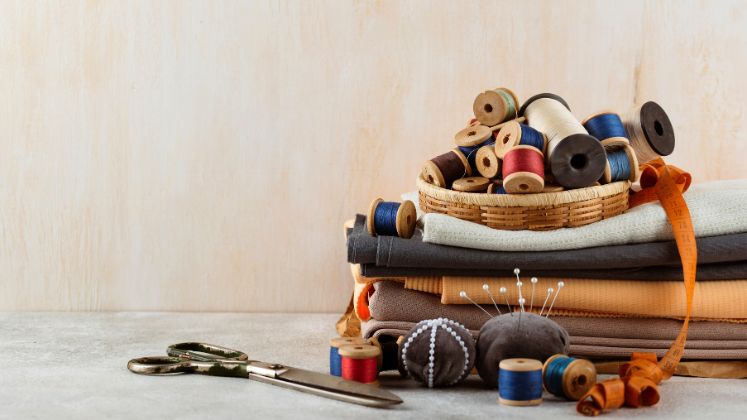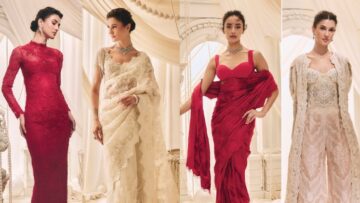In fashion, trims and accessories are like punctuation marks – they’re the details that add emphasis, pauses and flair, influencing a garment’s overall appearance, durability and feel while also increasing its market value.
However, of late, the industry is going through a tough phase with exports being stagnant for many years now. India’s garment exports hit a record high of US $ 17.33 billion in 2017, but in 2023, it reached US $ 14.5 billion, far less than China’s US $ 164 billion, Vietnam’s US $ 40 billion and Bangladesh’s US $ 43.8 billion.
Experts argue the situation has worsened due to the increased upheaval in Middle East due to the recent flare-up in Israel-Iran conflict. If the conflict intensifies, it may result in higher global crude oil prices, higher freight costs and increase cargo insurance, all of which would fuel inflation. The MSMEs would be particularly impacted by this as the pressures felt by larger companies would trickle down to them.
Many countries are also adopting more protectionist policies. This, combined with a stronger dollar and rising energy costs, has disrupted global trade. In 2023, textile exports worldwide fell by 10 per cent and clothing exports dropped by 6 per cent, mainly due to supply chain issues, declining demand from the EU and US and economic downturns in key supplying countries.
To add to the woes, attacks on the Red Sea by Houthis have forced ships to reroute around the Cape of Good Hope, increasing transit times for Asian exports headed to Europe, creating further delays and challenges for the industry.
“The market size has become stagnant, with domestic consumption in India showing no significant growth. International markets have also contracted slightly over the past two years. There’s been intense pressure on pricing, so while volumes might be increasing, the overall value remains stagnant or is even declining,” lamented Vishal Kapoor, MD, Goodwear, a manufacturer with a vertically integrated production facility that offers a wide range of linings and interlinings, boasting an annual turnover of approximately US $ 20 million.
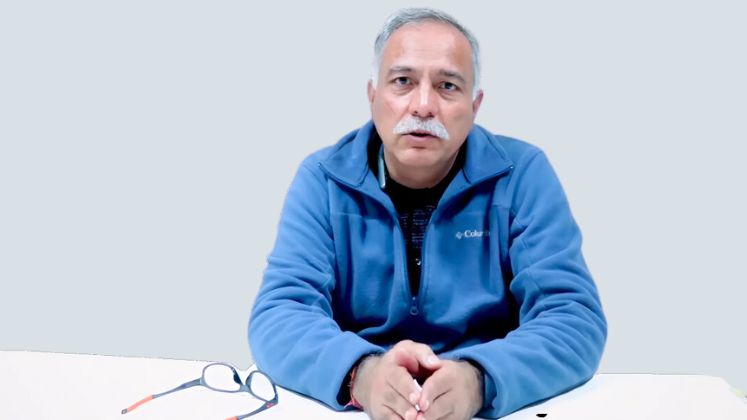
However, growth is still achievable. The players who are doing well in this tough scenario are those who focus on innovation and sustainability, setting themselves apart from the competition.
Also, accessories such as buttons, threads, zippers, swing tags, motifs, rivets, twill tapes, shoulder pads, linings, interlinings, hooks and eyes, patches, padding, snap fasteners, elastic labels, cords, eyelets, grommets, seam sealing tapes, laces, braids, beads, sequins, rhinestones, ribbons, drawstrings, fringes, tassels and others offer endless ways to customise garments and are always in vogue.
“Factors such as rising disposable incomes, evolving fashion trends and a growing middle-class will fuel the growth of the trims industry,” said Aabhas Yash Arora, MD, Titan Zip Fastener Industries, a leading manufacturer of zippers and sewing threads, with the capacity to produce up to 55 million zipper pieces annually. Soon, Titan will open a new plant in Sonepat, Haryana.
| We’re working on developing multi-purpose buttons such as those with a rubberised coating for enhanced functionality. Currently, pastel colours are trending and neon accessories pair beautifully with them. – Amit Jain, Managing Partner Aero Enterprises |
 Amit Jain, Managing Partner, Aero Enterprises
Amit Jain, Managing Partner, Aero Enterprises
Echoing similar sentiment, Amarnath Arora, Business Development Manager, Arun Electronics, added, “As India cements its position as a global textile hub, the demand for trims such as plastic seal tags, silicon labels, buttons, zippers and other accessories is expected to rise significantly.” Arun Electronics, a leader in manufacturing plastic seal tags, has the capacity to produce 50-60 million pieces, alongside a broad range of other garment accessories such as plastic hang tags, plastic and wooden hangers, monograms, sample sealers, security sealers, rubber and PU labels, zip pullers and all kinds of plastic seals for various industries.

Trims evolve: From basic commodities to stylish, functional innovations
Accessories are constantly evolving, with designers using them to enhance and define their creations. One great example is the use of zippers. Last year, South Korean model HoYeon Jung opened the catwalk for Louis Vuitton’s women’s collection wearing a skirt and bodysuit featuring dramatically oversized zippers. According to designer Nicolas Ghesquière, they were the largest zippers ever made. This bold choice inspired him to resize other garments and details, resulting in a Summer 2023 collection that revolved around zippers.
In a similar vein, actor Zendaya made headlines at the Louis Vuitton Spring 2024 show in Paris, wearing a striking white gown with oversized zippers and buckles. The floor-length dress featured a double-zipper design that ran from top to bottom, which she styled dramatically – unzipped down to her belly button and up to her thighs. For men, quarter-zip polo necks have become a new style symbol, replacing the shirt and tie. Celebrities like David Beckham and Rishi Sunak are big fans of this trend.
As fast fashion continues to rise, there is a growing demand for customised products and fresh designs, explained Aabhas Yash Arora. While customisation used to focus primarily on matching zipper colours to fabrics, Titan Zip Fastener Industries now offers zippers in a variety of colours, along with elements available in different hues to complement garment designs. Additionally, the company provides zippers with PU finishes for enhanced visual appeal, water-repellent options for rainwear and workwear and reflective yarn or tape for sportswear and safety equipment.

“We promote the use of man-made yarns like cotton for producing cotton tape zippers,” said Aabhas Yash Arora. He further added that through their Ayka Zippers brand, they meet the demand for personalisation by offering customised pullers with short lead times, made possible by high-quality molds available in India. These pullers come in TPU and zinc metal, available in various colours, enhancing both functionality and style.
Similarly, buttons are also undergoing a stylish transformation. Chanel’s Spring/Summer 2024 Haute Couture show, titled ‘The Button’, transformed this everyday element into a central feature of haute couture. Dresses were adorned with rows of buttons or a single statement button, each adding a distinctive touch. The set prominently featured a giant button with Chanel’s iconic double C logo.
“One of our primary focuses in case of plastic buttons is incorporating recycled materials. We’re working on developing multi-purpose buttons such as those with a rubberised coating for enhanced functionality. Currently, pastel colours are trending and neon accessories pair beautifully with them. For example, combining grey clothing with neon green buttons is a style that’s beginning to gain traction,” said Amit Jain, Managing Partner, Aero Enterprises, a prominent manufacturer and exporter of high-quality buttons, including wooden, coconut, urea, laser, sheet rod, sewing and apparel buttons. They produce both branded and non-branded buttons, with a manufacturing capacity of 6 million buttons per month.
The company has recently partnered with Hisanaga, a well-known Japanese firm, to market their high-quality snap buttons in India. Hisanaga specialises in snap buttons for a wide range of garments and the bag industry, ensuring that all necessary testing and quality standards are met.
Patchwork, too is seeing a resurgence. On regular jeans or maxi skirts, the rule seems to be: the more, the merrier. Who says we’re finally waving goodbye to the Y2K era (roughly 1997 to 2004)? Top celebrities and designers alike are embracing this trend, with known names like Dolce and Gabbana showcasing patchwork in their runway shows.
Another notable trend making waves is fringing. At New York Fashion Week (S/S ’25), fringing made a significant comeback. From tassels on shirts and dresses to fringe accents on jackets and coats, this trend adds a bohemian touch to the season. Designers are going all out with embellishments, incorporating diamonds, sequins, beads, embroidery and appliqués to add sparkle and texture to garments. While this fringe is more subtle in size, its delicacy allows for greater incorporation into a broader range of pieces, such as the Giorgio Armani sleeveless collared blouse and Bottega Veneta midi skirt.
| Many companies are establishing R&D divisions specifically to explore tech integration in products such as led trims, magnetic closures and conductive textiles for wearables. |
Lace too is witnessing a surge. Dolce & Gabbana’s Spring/Summer 2025 fashion show in Milan saw the queen of pop, Madonna, make a statement in a black lace veil that shrouded her entire body. Meanwhile, at New York Fashion Week, lace skirts were prominent, often styled with tailored waistcoats, coordinating tunics or cosy cardigans, showing that lace can be both timeless and adaptable in modern fashion.
“We are introducing more premium trims for bra manufacturing, particularly in rose gold and different finishes. As part of our efforts, we are developing new styles of bra cups especially for activewear and have enlisted the expertise of a seasoned technician from Sri Lanka to assist with this production,” explained Nikhil Kotak, CEO, Kotak Group. The company oversees a diverse range of product categories, including bra cups, elastics, hangers, intimatewear, TPU tapes, straps, laminated foam, fasteners, hangers and clips, catering to the apparel markets in India, Bangladesh, Sri Lanka and the GCC.
With multiple molding lines, fabric-to-fabric bonding and lamination machines, the company has the capacity to produce one million pairs of bra cups each month.
Manufacturers are now offering tailored solutions, such as custom logos, colours and designs on buttons, zippers and labels, with many investing in advanced technologies like 3D printing and digital design tools to efficiently meet these needs. “However, this trend brings challenges such as shorter production runs, longer lead times and higher costs, along with balancing customisation with scalability and consistent quality,” noted Amarnath Arora.
Experts say that there is also a growing focus on smart trims, such as tamper-proof sealers with barcodes and RFID-enabled labels, driven by the rise of e-commerce and retail digitisation. Many companies are establishing R&D divisions specifically to explore tech integration in products such as LED trims, magnetic closures and conductive textiles for wearables.

In the domestic market, the demand for traditional embellishments like zardozi, sequins and handcrafted trims remains strong, reflecting India’s cultural heritage. To cater to the ethnic and traditionalwear segment, manufacturers are designing trims with intricate embroidery, zari and mirrors. With the rise of e-commerce and fast fashion, trims manufacturers are also producing smaller, customised batches to serve a diverse range of clients, from high-end luxury fashion brands to budget-conscious labels. Additionally, they are focusing on regional textile hubs to offer trims that align with local needs.

“Brands are using intricate embroidery, 3D appliqués and heavily embellished trims to create standout pieces. Many manufacturers are shifting towards more flexible production models that can handle smaller batch sizes and customised orders, whether it’s a bespoke embroidered patch or a unique texture for a zipper,” claimed Ankit Jain, Director, Telephone Thread. With an annual turnover of Rs. 32 crore (US $ 3.81 million) for FY 2023-24 and a production capacity of 700 tonnes, his company specialises in viscose rayon and polyester embroidery threads under the brands ‘Telephone’ and ‘Worldwide’. Ankit also mentioned, “We offer comprehensive embroidery thread solutions to major garment exporters, high-end fashion designers and home furnishers, providing a portfolio that features 2,000 colour shades.”
“There are a lot of fine fabrics now being used and a lot of washes are being done. Therefore, we have developed interlinings specific to fabric and wash requirements,” stated Yogesh Suri, Director, Welco Agencies, a leading solution provider in the field of Interlining and Garment Accessories. Welco is the sole agent and distributor for Wendler Interlining (Germany), Class Interlining (Turkey), Venfuse (China), QST (USA) for India and Nepal. Welco houses the entire range at all major cities in India.

He elaborated that fusing interlinings with certain PU-coated fabrics can present challenges. Therefore, they offer specialised interlinings designed with unique coatings that facilitate better bonding. Additionally, for textured fabrics like seersucker, using regular interlining can flatten their distinctive texture. To maintain that texture, the company has developed a specific type of interlining tailored for these fabrics.
Furthermore, with lightweight materials such as chiffon, the interlining may be visible from the other side, which can detract from the garment’s overall appearance. To address this issue, they have created interlinings with invisible coatings that ensure a seamless look. The company also offers interlinings that can withstand high enzyme or high-degree washes.
“For thinner, coloured fabrics, such as those used in ladies’ blouses, the industry generally uses black or white interlinings. However, we recognise the demand for coloured interlinings, which often face challenges in meeting minimum order quantities (MOQs). To address this, we will introduce coloured interlinings with no MOQs at the beginning of 2025,” said Yogesh.

“Innovation is integral to any product line, but it never diminishes the value of older ones. In fact, it complements them. Fashion is cyclical by nature, often repeating at certain intervals, which is why many older product lines remain relevant,” stated Akshay Kumar, Director, Madeira India Pvt. Ltd., an embroidery threads manufacturer and supplier from Germany. Madeira India was founded in Gurgaon in 2007 to address the needs of the growing market in India and its neighbouring countries.
Focus on sustainability
In recent years, manufacturers have seen rising demand for environmentally responsible products alongside increasing regulatory pressures. As a result, many trims suppliers are adopting eco-friendly materials and sustainable manufacturing practices. For example, Titan Zip Fastener Industries has been using PNG (pressurised natural gas) since 2012 and claims that conflict minerals such as titanium, tin, tungsten and gold (3T+G) are not included in its products. It specifically mentions that any traces of these metals in its products are likely due to impurities in the ore itself.
“Madeira is committed to innovation and has long been focused on sustainability initiatives, such as using 80 per cent recycled water and incorporating recycled polyester and Sensa Green (Lyocell). However, the biggest challenge lies in the unpredictability of market acceptance and response,” said Akshay Kumar.
“There is a noticeable demand from buyers – albeit still limited—for trims made from sustainable materials. Consequently, brands are actively seeking trims that align with their environmental goals,” claimed Amarnath Arora.
“We are committed to continuous innovation in our product offerings. This includes developing sustainable alternative threads, such as FSC-certified Viscose Rayon and GRS-certified recycled polyester threads for embroidery,” highlighted Ankit.
He further shared that Telephone Thread is fully embracing technological upgrades to minimise its carbon footprint and enhance sustainability. Its dyeing plant operates using a gas-based boiler and includes an Effluent Treatment Plant (ETP). All four factories implement rainwater harvesting, while the Delhi office is powered entirely by solar energy and LED lighting. Additionally, the company also introduced a Thread Winding Machine from Switzerland-based SSM, which has significantly improved product efficiency.
Strategies to ward off China factorCompeting with a giant like China is certainly a challenge, but India has developed a strong industrial foundation over the past two decades marked by significant growth in MSME production capacities, capabilities and technological advancements. Industry players are employing multi-pronged strategies to maintain their competitiveness amidst Chinese competition. For instance, the focus of Titan Zip Fastener is on enhancing supply chain efficiency and fostering strong client relationships to provide reliable, customised solutions with shorter lead times. “Smaller and medium-sized Indian companies can leverage their agility to adapt quickly to market changes, making them more attractive to the fast fashion brand,” said Aabhas Yash Arora. “China always had advantage in economies of sales which resulted in lower prices of the product but Indian manufacturers have advantage of small quantities, quick response and stable environment,” said Akshay Kumar. Amarnath Arora highlighted, “Rising labour costs in China are making Indian products more attractive. Some manufacturers are even working to establish large-scale production units to compete with China’s pricing.” Whereas, Piyush Jain, Director, Sharman Udyog highlighted, “Indian trims makers are positioning themselves as preferred suppliers of unique, high-quality and sustainable products by focusing on eco-friendly practices, investing in R&D, adopting modern manufacturing techniques and exploring new markets.” Sharman Udyog produces approximately 100 crore trims annually, offering a diverse range of products, including labels, tags, tapes, badges and other packaging items. Industry players also highlighted the craftsmanship associated with Indian manufacturing, particularly in hand-embroidered and artisanal trims, which give Indian products an edge over others. According to experts, the Chinese competition may not significantly impact the sewing thread market, as this product category is not a commodity. Instead, three key parameters determine a manufacturer’s competitiveness in the marketplace: manufacturing capacity, quick turnaround times and quality and price. However, Amit Jain highlighted concerns about unethical imports from China, particularly involving highly under-invoiced products, which have led to significant revenue losses for the government. Also, low-grade materials are being imported, posing health and environmental risks. |
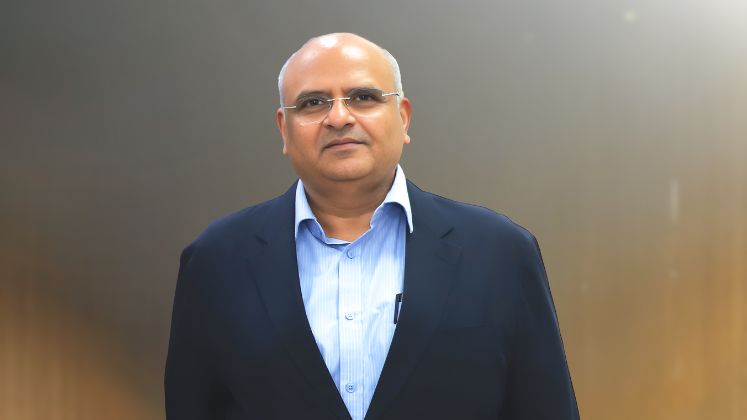
Highlighting the company’s focus on innovation, Rajeev Pradhan, Executive VP- Industrial Business – Vardhman Yarns & Threads Ltd (A&E), stated that the company launched INTEGRITY, the world’s first anti-counterfeiting, sustainable sewing thread. Developed in collaboration with Applied DNA Sciences, this molecularly tagged thread ensures 100 per cent product authenticity and provides global brands with a comprehensive solution for sustainable traceability.
| For our Japanese buyers, including Daiso, we are producing hangers made from sustainable materials, utilising patented polymer technology that incorporates TANTEC polymers, which emit fewer emissions when burned. – Nikhil Kotak , CEO, Kotak Group |

Vardhman Yarns & Threads Limited (VYTL) is one of the world’s leading manufacturers of industrial sewing thread and operates as a joint venture between Vardhman Textiles Ltd., India, and American & Efird (A&E) LLC, US. VYTL offers a diverse range of solutions for sewing, embroidery and special applications across clothing, home textiles and leather products.
Rajeev also mentioned that A&E was the first to introduce Nylon 66 Recycled Thread, Anefil Nylon ECO 100 in India for the non-apparel category, an initiative that received great appreciation from global footwear brands with a presence in the Indian market.

There has been a significant demand for sustainable products, and as a responsible thread manufacturer, Sanjeev Narula, MD, Vardhman Yarns & Threads Ltd (A&E) said their company remains committed to sustainable practices in its manufacturing processes. Their two manufacturing plants in India are equipped with zero liquid discharge facilities. By improving disposal methods, they have achieved an impressive 98 per cent zero waste to landfill. They also plan to implement solar power generation at two of their manufacturing locations by the end of the fiscal year 2024-25. A&E offers a range of sustainable ECO100 recycled thread products for use in both apparel and non-apparel applications, enabling manufacturers, brands and retailers to create environmentally responsible products.
Piyush Jain highlighted that this company places a strong emphasis on sustainable materials, including recycled plastics and organic fabrics.
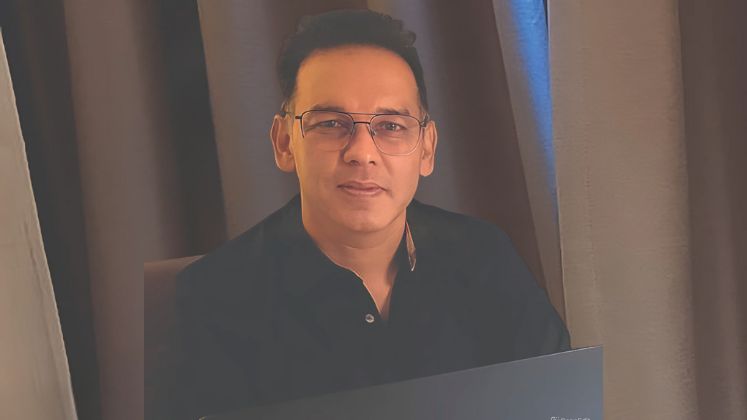
“There is a significant shift towards sustainability among international buyers, but this trend remains limited. Unfortunately, Indian brands and consumers seem less aware of it,” noted Vishal Kapoor.
“In terms of sustainability, we are exploring the use of high-quality recycled plastic bones and underwires, which is a relatively new initiative. For our Japanese buyers, including Daiso, we are producing hangers made from sustainable materials, utilising patented polymer technology that incorporates TANTEC polymers, which emit fewer emissions when burned,” said Nikhil Kotak.
Sachin Jain, MD, Ketan Buttons Pvt. Ltd., highlighted their collection of eco-friendly buttons, including real horn buttons made from repurposed horns, corozo buttons derived from the tagua palm seeds and coconut buttons made from coconut shells – all fully biodegradable and sustainable. They also produce recycled polyester buttons, reducing plastic waste by turning discarded materials into durable, high-quality products, while responsibly sourcing metal buttons to minimise environmental impact. Ketan Buttons manufactures over 1.5 million buttons per month.

